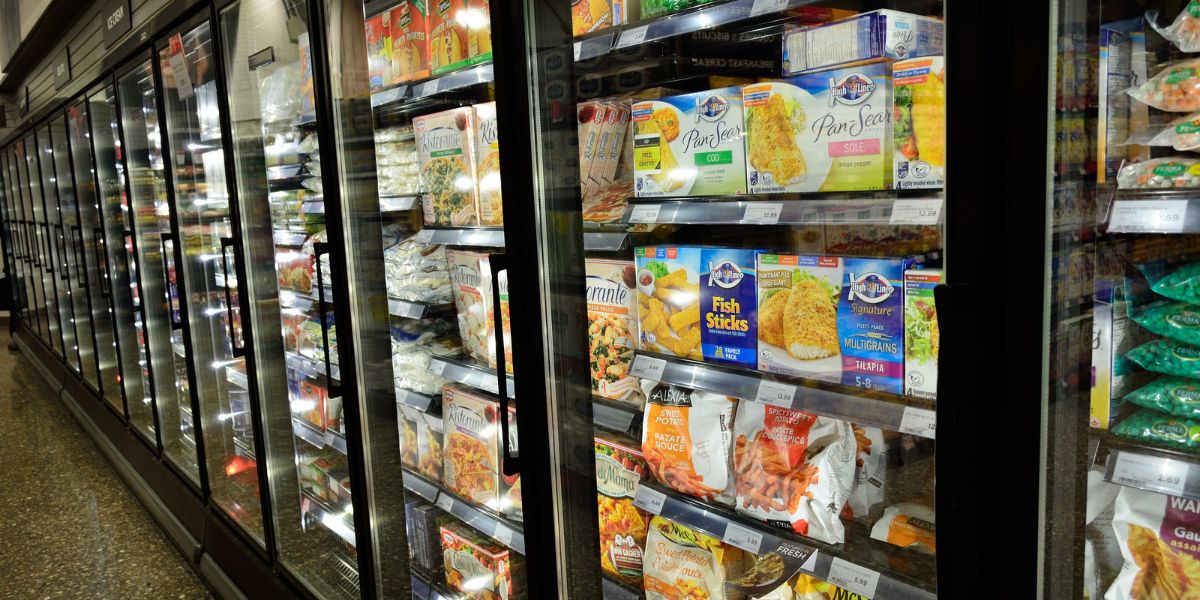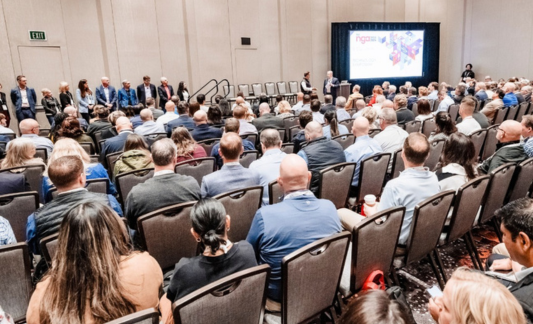Help Isom IGA recover from devasting floods

1 min read
Unlock Success & Savings: Why Every Independent Grocer Should Apply for the USDA's REAP Grant
Written by Eric Pereira
Jun 6, 2023
If you are an independent grocer, one of your stores could be in a rural community. And while energy efficiency may be on your to-do list, that list includes more pressing items for your day-to-day operations.
But what if there was a game-changing opportunity to boost your business, reduce operational costs, make a positive impact on the environment, and prepare your store for the upcoming refrigerant HFC (hydrofluorocarbon) gas phasedown? REAP (Rural Energy for America Program) from the USDA makes all those benefits possible for rural independent grocers.
REAP is a remarkable funding opportunity specifically designed to support independent retailers in their pursuit of energy efficiency and sustainability. By applying for this grant, independents can access financial assistance to invest in energy-efficient technologies and renewable energy systems, paving the way for long-term success and substantial savings.
The program provides guaranteed loan financing and grant funding to rural small businesses for renewable energy systems or to make energy efficiency improvements.
“This grant has the possibility to save the independent grocer in rural America,” said Jimmy Wright, owner of Wright’s Market in Opelika, Alabama, "and help them prepare for what is ahead."
Let’s get into the details: who can apply, funding requirements, resources available to help save time and money in the application process, and more.
Who Can Apply for REAP?
This grant is for stores in communities of less than 50,000 people. To determine if your store location qualifies, see the USDA eligible rural area map here.
How May I Use the Funds Granted?
According to the USDA, funds may be used for the purchase, installation, and construction of energy efficiency improvements, such as:
- High efficiency heating, ventilation and air conditioning systems (HVAC)
- Insulation
- Lighting
- Cooling or refrigeration units
- Doors and windows
- Electric, solar or gravity pumps for sprinkler pivots
- Switching from a diesel to electric irrigation motor
- Replacement of energy-inefficient equipment (may include HFC changeouts if part of a larger efficiency project for refrigeration systems)
Qualifying retailers can also use the program funds to purchase and install renewable energy systems.
How Much Funding Is Available?
The energy efficiency grants range from $1,500 to $500,000 per site.
The USDA has loan guarantees on loans up to 75% of total eligible project costs and grants for up to 50% of total eligible project costs. Combined grant and loan guarantee funding can cover up to 75% of total eligible project costs.
All My Equipment Works, Why Bother?
The average U.S. grocery store profit margin over the last 10 years is 1.58% so efficiency should always be top of mind — you can’t afford to be wasteful when it comes to energy.
By putting efficient practices and equipment in place — many of which are simple and inexpensive — a ratchet effect happens. Even small changes can improve an independent store's efficiency, says Peter Cooke, co-founder of Ratio Institute, IGA’s energy and sustainability partner.
“It allows retailers to maximize bottom-line profits. It’s that multiplying benefit that you get with efficiency, it’s not a 1:1 ratio. It’s actually an 18:1 ratio for electrical use,” Cooke says. “Since energy and waste bills are paid out of gross profits, a store must sell many dollars’ worth of product to produce $1 (of profit). Every dollar of energy costs reduced is equivalent to $18 in revenue. That means that by implementing small practices that can save your store $15,000 a year, the equivalent benefit is like increasing sales by $270,000."
Tan offers another example, adding, "The average store spends more than $10,000 annually in refrigerant repairs and replacement gas. This is effectively like having to sell 90,000 loaves of $2 bread just to pay for these inefficiencies."
Thus, it is in an independent's best interest to take advantage of any grants available to increase energy efficiency.
Invest Before It’s Too Late
Hydrofluorocarbons, or HFCs, are a synthetic chemical used in things like refrigerators and air conditioners to keep them cool. But following the passage of the AIM Act (2020), the production of HFCs are scheduled to be phased down 79% by 2029 and by 85% by 2036.
Food retailers have an opportunity to rethink how to implement, improve, and upgrade their cooling needs through operational and technological innovation to meet these requirements.
“If you can get a grant to pay for these upgrades, do it now, because once your state requires it, it will be too late,” Cooke says.
You’ll save money by updating now, especially with grant funding, as installation, material, and labor costs will be higher in the future. Additionally, Cooke adds that it will be harder to find labor to install once every state passes their regulations. California is already leading the way with HFC regulations and the State of Washington is in the process of implementing them.
REAP Success Story
What kind of savings can an independent expect if awarded REAP funding? Look at Fiesta Foods grocery store in Beresford, South Dakota as an example.
“The REAP grant covered 25% of the total project cost, allowing them to overhaul much more of the store than they would have otherwise been able to do, sparing them the future mess and hassle of multiple renovations,” according to an Environmental Law and Policy Center report.
“The new equipment has saved them $1,200-1,300 per month in energy, while reducing repair and food costs. They no longer have to individually wrap produce, as it’s behind closed doors, reducing shrinkage and extending the shelf life of their food. The new units are easier to clean, keep the food cleaner and free of dust, and offer a more comfortable shopping experience.”
Before You Apply
Before you consider applying for the REAP grant, follow these two steps:
- Verify your store location’s eligibility here. “Before starting the application process for the REAP grant, we recommend verifying your store location’s eligibility on the USDA website. Simply enter your address and it will calculate if your store is in an eligible location,” Cooke says.
- Perform an energy audit on your store. The audit must demonstrate how much energy you are using on the front and back end.
- Costs for this audit can vary.
“We have seen some of these audits cost as much as $20,000 from other organizations,” Cooke says. “Ratio Institute is a 501c3 or non-profit. We have created a partnership with IGA to support their members because we know it’s hard for independents to access these kinds of savings, so we’re doing everything we can to make it affordable and easy for the retailer." - Independent Grocers Alliance members receive the energy audit for the REAP grant submission from Ratio Institute for $500.
- If desired, Ratio Institute can complete the entire USDA REAP application for $1,000 plus 10% of project costs (if grant is approved) to include:
- Engineering estimates
- Application processing
- Implementation documentation
- Final report writing and submittal
- Costs for this audit can vary.
Retailers who choose to use Ratio Institute’s audit will receive an online 24-point questionnaire centered around high impact behaviors and installed equipment, which should take 15 minutes to complete. The retailer must then gather a minimum of 12 months’ worth of the following bills:
- Electric bills
- Gas (heating) bills
- Water and sewer bills
- All solid waste and recycling bills or credits
- Any other municipal services bills
Once Ratio Institute receives the assessment and bills, they will calculate:
- Realized savings: value in dollars and avoided greenhouse gas (GHG) of existing in-place items
- Potential savings: value in dollars and GHG of process and/or upgrades to employ or deploy
- Best practices: value of additional technologies and refrigerant improvements in dollars and GHG
- Operational comparisons: how your store compares to a typical store of your size, plus other insights and recommendations based on these metrics
From there, retailers can deliver Ratio Institute’s report to their contractor to estimate a quote for recommended services. Optionally, Ratio Institute can consolidate quotes, prepare SOW documents and project narrative, engineering calculations, specification sheets, and other technical information, and combine for the grant submittal. The latter costs $1,000, which covers the $500 for the report and $500 for the initial application, plus 10% of the project costs based only on grant approval.
Click here to contact Ratio Institute for more information.
Resources & Support for Independent Grocers
Applying for a grant can be daunting, but by prequalifying your store through the location eligibility map and an energy audit from Ratio Institute, you’ll quickly determine if this is the right grant to pursue.
As another resource option, Wright recommends reaching out to a nearby university if available to help with the grant writing process.
Here is a full overview of the REAP program. If you have other questions about funding, see these FAQs from the USDA and review your store location eligibility here. More details are available here.
A REAP grant serves as a beacon of hope, providing financial support to businesses willing to invest in energy-efficient technologies and renewable energy systems. This grant can help cover a significant portion of the costs associated with energy audits, retrofits, and equipment upgrades. Furthermore, it enables retailers to access expert guidance and resources to make informed decisions that will benefit their businesses in the long run.
Previous Story
← A&J Market wins WFIA Retailer of the Year
You May Also Like
These Stories on Feature Story
Dec 9, 2025 4:16:05 PM |
6 min read
Nov 19, 2025 6:04:44 PM |
5 min read
Nov 12, 2025 10:09:52 AM |
2 min read



No Comments Yet
Let us know what you think